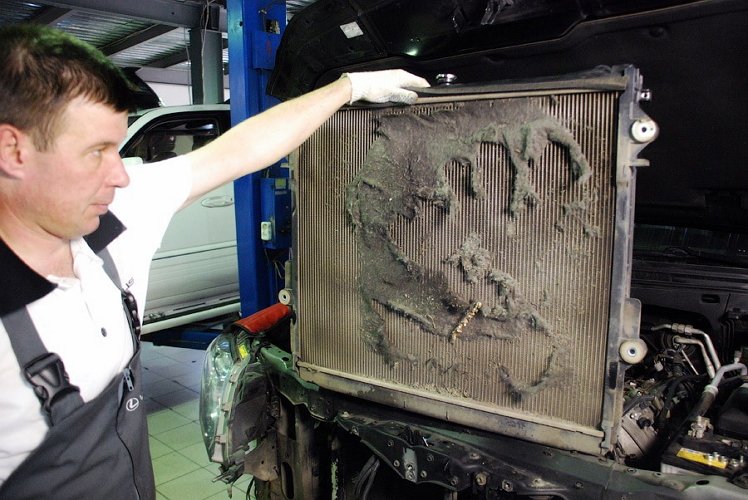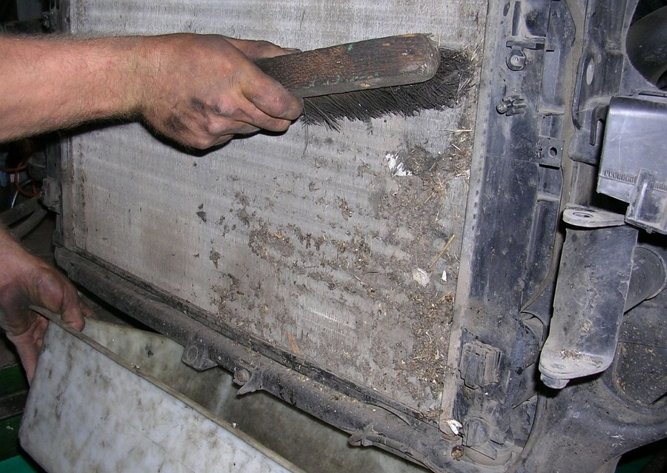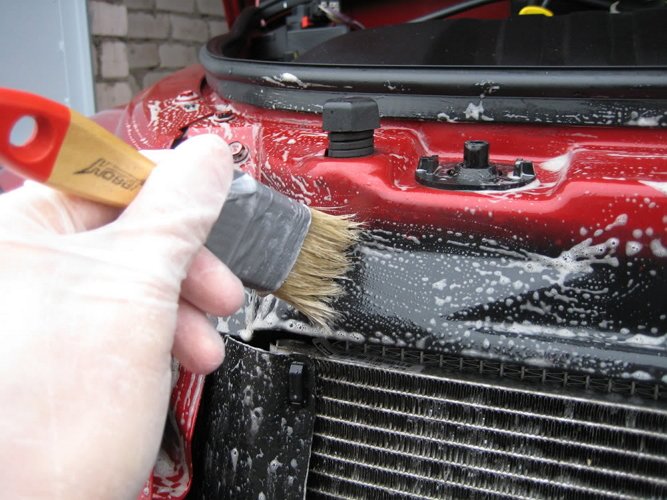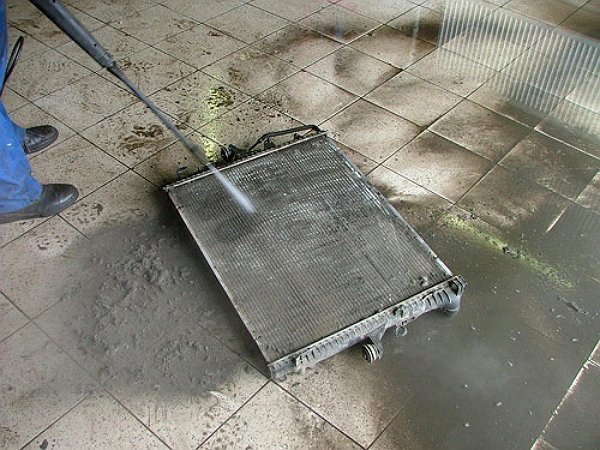
Do-it-yourself car radiator cleaning
Content
The radiator of the car is in front of the whole car, and that is why it takes the brunt of the blow, consisting of dust, dirt, and insects that have been killed by it. This is an external effect on the radiator. In addition to it, there are internal chemical processes that pollute the radiator from the inside with their products.
Do-it-yourself car radiator cleaning
Everything would be fine if the radiator did not perform the most important function - engine cooling.
The car radiator is structurally located in the engine cooling system, performing the function of a heat exchanger, which includes two circuits: hot coolant from the engine entering the radiator cools down and is directed again towards the engine.

For stable operation of the radiator, it is necessary that it is clean, both outside and inside, especially.
Basically, cleaning the radiator is not so difficult, especially for the driver who does not faint at the words "wrench" or "screwdriver". The only condition for cleaning the radiator with your own hands is that the radiator cleaning procedures are carried out carefully and carefully.
In general, experts recommend for the highest quality external cleaning of a car radiator to do it on a removed (dismantled) radiator. After all, the space under the hood of a modern car is crammed to the stop, and cleaning the radiator from the outside with water or compressed air under high pressure can damage the honeycomb and brass radiator tubes.

But it depends on your desire to know the design of the cooling system and the availability of time. Indeed, in order to dismantle the radiator, you will have to remove the radiator grill.
Do-it-yourself external cleaning of the radiator
The traditional radiator of the cooling system is a design of tubular-plate or tubular-strip grilles. Brass or aluminum is used for these purposes, both metals are very delicate and soft. They are not at all resistant to mechanical damage. It is necessary to take these qualities of the radiator into account when dismantling - installing and directly cleaning.


External cleaning of the radiator consists in blowing out the honeycomb with compressed air or water pressure. We have already talked about high pressure. Blowing is done on both sides, with the utmost care to avoid damage to the honeycomb.


It is not recommended to categorically use chemicals for external cleaning, which contain aggressive acidic components.
Internal flushing of the radiator
The first thing you should pay attention to when draining the coolant from the radiator is its condition. If the liquid is clean, then flushing will be just a preventive measure. If there is rust and scale in the drained coolant, then the radiator is cleaned just in time.
For internal cleaning of the radiator, we mount it in place. We fill in distilled water with a cleaning agent, as a rule, this is Antiscale (it cannot be used with a cooling liquid, only with water). Previously, caustic soda was used.


After filling with water, we start the engine and let it run for 15-20 minutes. After that, we drain the water with the cleaning agent and rinse the radiator with clean distilled water at least 5 times. Fill the system with coolant. Without closing the radiator cap, we start the engine in order for air to escape from the cooling system. Everything. You are ready to move.
It is worth recalling that modern high-quality antifreezes contain lubricants and anti-corrosion substances, which prevents rust from forming inside the radiator. But, prevention is a sacred cause.


Good luck to you lovers of your car.


Watch this video on YouTube
